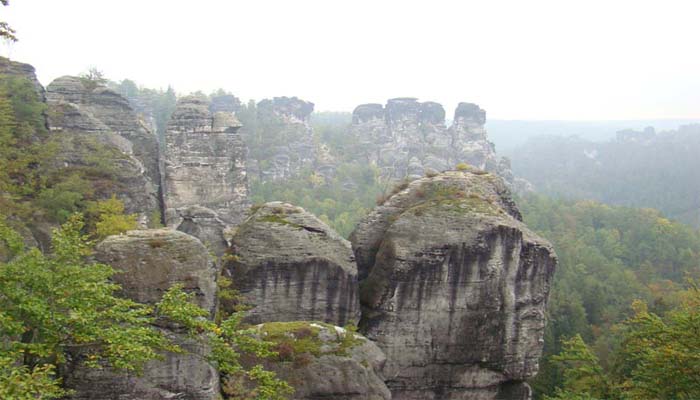
Saxon Switzer Land, GÖrlitz & Bautzen
Saxon Switzerland on the border of the Czech Republic is one of the most unique landscapes in Germany and lies to the south of Dresden. It was named Saxon Switzerland after a Swiss painter Adrian Zingg who came here towards the end of the 19th Century. He worked in Dresden. This place reminded him of his native land in Switzerland and so he named it Saxon Switzerland. This was only the beginning of several places in Germany being named as Switzerland. There are as many as 120 Switzerlands within Germany although most of them are smaller areas.
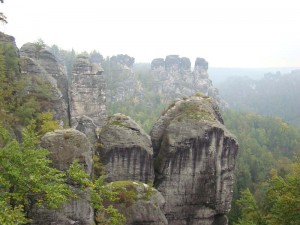
It is possible to do a day trip here or stay in Saxon Switzerland and do the neighbouring Ore Mountains as well. There was an ocean here millions of years ago and later the oceans evolved into the romantic scenery that you find here at the Elbe Sandstone Mountains. The beauty of wild flower meadows and the Bastei (Bastion) rock formation provides stunning sceneries of deep ravines, bizarre rock towers and huge table rocks which have been created on the grounds of a former ocean.
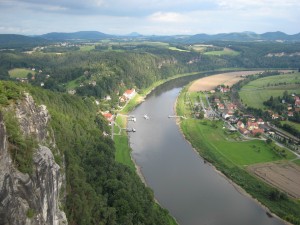
Located 30 kilometres from Dresden, Saxon Switzerland lies between the Ore Mountains and the Lusatia Mountains extending from the town of Pirna and across the Czech Repubic border to the town of Decin in Bohemia.The Czech Republic side of the mountains is known as Bohemian Switzerland. The place has over 1100 climbing peaks and is a haven for international climbers from across the globe. Even today you find the Königstein Fortress and the Hohnstein Castle. There are hardly any remains of the other castles and fortresses except the Bastei or the castle on the Falkenstein, which today is a climbing peak.
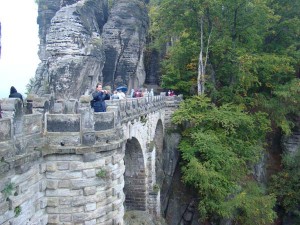
There is also the Elbe cycle path or you can board a steam paddle boat along the Elbe river to discover the beauty of the region. This region was made a national park only during the last days of East Germany, just before the German reunification.
It is interesting to note that the famous Frauenkirche (Church of our Lady) as well as the Zwinger in Dresden were built with the famous sandstone from the Elbe Valley. Even the historic Brandenburg Gate in Berlin was built from the sandstone that you find here in Saxon Switzerland. It is here that Germany’s first ever landscape photographs were captured way back in 1853 near the Bastei rock formation. The famous Bastei Bridge too was built around the 1850s and later reconstructed out of wood due to increase in the number of tourists and we had the opportunity to cross the Bastei Bridge, the first in Europe that was intended only as a tourist attraction.
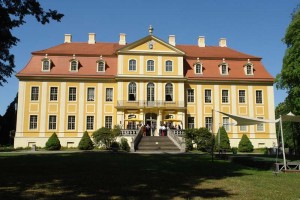
For nature lovers it is strongly recommended to have an overnight stay at one of the wellness hotels in this region
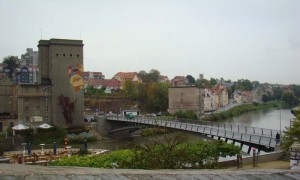
After a halt for about an hour at Saxon Switzerland we headed to the region of Upper Lusatia which lies to the east of Dresden,En route we halted for lunch at the Rammenau Castle. The building which is a museum today comprises of a treasure chest of late Baroque and early Classicist interior architecture and has various rooms of diverse styles including a Chinese Room, a Birds Room, a Bulgarian Room and a Hunting Room.
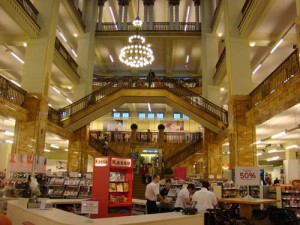
Our next stop was at the easternmost city of Germany – Görlitz which has a Silesian influence and is located on the Polish border. Görlitz is the centre of Lower Silesia’s Upper Lusatia region and is one of the most interesting towns in Saxony. Görlitz is one of the few places where the synagogues survived the war and the city has a great influence of various religions. We did a short walking tour of Görlitz although we didn’t have time to visit the Holy Grave – a true to life replica of the grave of Jesus that you find in the holy city of Jerusalem.
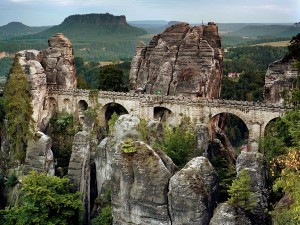
Having escaped destruction during WWII, Görlitz looks pretty much the same as it was in 1945, and hence is one of the most beautiful towns in Germany. From Renaissance to Art Nouveau, the town is a feast for lovers of architecture. Large parts of the old town have been restored to their former glory and after WW II, the town of Görlitz has been divided with a large part of it in Germany and a smaller portion of it in Poland which is known as Zgorzelec.
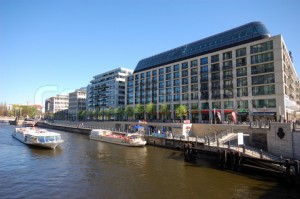
River Spree and St Nicholas Quarter in Berlin, Germany
Our brief halt at Görlitz included a visit to the Strasbourg arcade, a shopping arcade which was built by a Jewish merchant. Interestingly the spires of St Peter’s Church in Görlitz and other areas of the town as well is where the movie ‘Around the World in 80 Days’, starring Jackie Chan was shot.In the movie certain clips are shown as the Notre Dame in Paris, although shot in Görlitz.
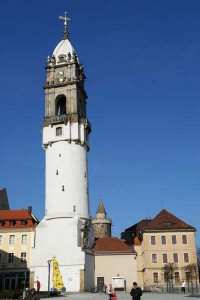
Our next halt was at the medieval looking town of many towers – Bautzen which lies approximately 54 kilometres west of Görlitz. What is unique about the town is its picturesque location and the upper town is situated on a granite plateau above the Spree River. Bautzen is a historical town and a former capital of Upper Lusatia.
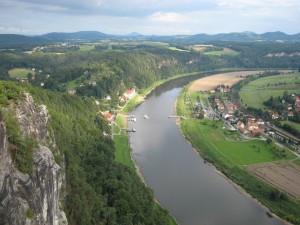
The AlteWasserkunst or Old Waterworks is the place from where you can watch the river in the valley as well as view water facilities partially cut into a rock.
Bautzen is also the centre of the Slavic minority of the Sorbs and the Sorbs have been able to sustain their own culture and language over centuries.After a traditional Sorbian dinner with a cultural event, we took a short walk through the medieval town centre before heading back to Radebeul.
The next day we had yet another exciting tour to the city of Johann Sebastian Bach as well as a visit to the city where European porcelain was invented.



